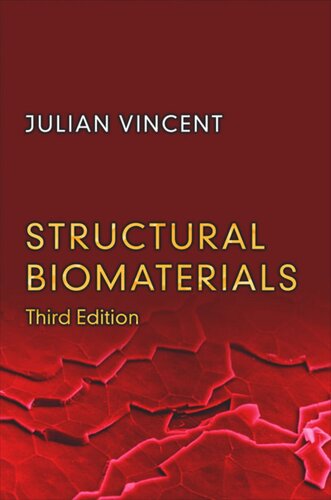

Most ebook files are in PDF format, so you can easily read them using various software such as Foxit Reader or directly on the Google Chrome browser.
Some ebook files are released by publishers in other formats such as .awz, .mobi, .epub, .fb2, etc. You may need to install specific software to read these formats on mobile/PC, such as Calibre.
Please read the tutorial at this link: https://ebookbell.com/faq
We offer FREE conversion to the popular formats you request; however, this may take some time. Therefore, right after payment, please email us, and we will try to provide the service as quickly as possible.
For some exceptional file formats or broken links (if any), please refrain from opening any disputes. Instead, email us first, and we will try to assist within a maximum of 6 hours.
EbookBell Team

5.0
30 reviewsThis is a thoroughly revised, updated, and expanded edition of a classic illustrated introduction to the structural materials in natural organisms and what we can learn from them to improve man-made technology--from nanotechnology to textiles to architecture. Julian Vincent's book has long been recognized as a standard work on the engineering design of biomaterials and is used by undergraduates, graduates, researchers, and professionals studying biology, zoology, engineering, and biologically inspired design. This third edition incorporates new developments in the field, the most important of which have been at the molecular level. All of the illustrations have been redrawn, the references have been updated, and a new chapter on biomimetic design has been added.
Vincent emphasizes the mechanical properties of structural biomaterials, their contribution to the lives of organisms, and how these materials differ from man-made ones. He shows how the properties of biomaterials are derived from their chemistry and interactions, and how to measure them. Starting with proteins and polysaccharides, he shows how skin and hair function, how materials self-assemble, and how ceramics such as bone and mother-of-pearl can be so stiff and tough, despite being made in water in benign ambient conditions. Finally, he combines these topics with an analysis of how the design of biomaterials can be adapted in technology, and presents a series of guidelines for designers.